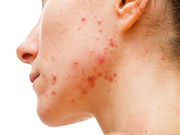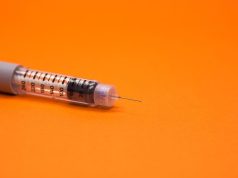PDT with 1.5 percent 3-butenyl 5-aminolevulinate gel reduces inflammatory, non-inflammatory lesions
WEDNESDAY, Dec. 23, 2015 (HealthDay News) — Daylight photodynamic therapy with a novel variant of unsaturated ALA ester, 3-butenyl 5-aminolevulinate hydrochloride (ALA-bu), is effective and well tolerated for acne, according to a study published online Dec. 12 in the Journal of Dermatology.
Hyuck Hoon Kwon, M.D., from Seoul National University College of Medicine in South Korea, and colleagues examined the efficacy, safety, and histological changes of facial acne after application of 1.5 percent ALA-bu gel using daylight only as the potential visible light source. Participants included 46 patients with acne who were randomized to ALA-bu or vehicle applications. The allocated gel was applied to facial acne lesions every other day for 12 weeks.
The researchers found that both inflammatory and non-inflammatory lesions had decreased significantly in the ALA-bu group (58.0 and 34.1 percent, respectively) at the final week. Mild adverse events were only reported by a few patients. Attenuated inflammatory cell infiltrations were observed in the histopathological analysis; concomitant reductions were seen in immunostaining intensities for interleukin-8, interleukin-1β, matrix metalloproteinase-9, and phosphorylated nuclear factor ΚB. Comparable patterns were seen in changes of their mRNA expression.
“In conclusion, this ambulatory daylight photodynamic therapy was effective, very well tolerated, and convenient for treating inflammatory acne lesions,” the authors write. “This novel regimen would provide a viable option for acne therapy.”
Copyright © 2015 HealthDay. All rights reserved.








